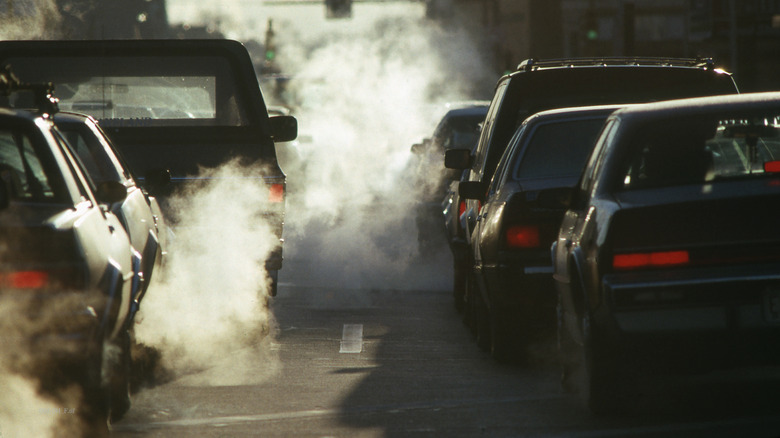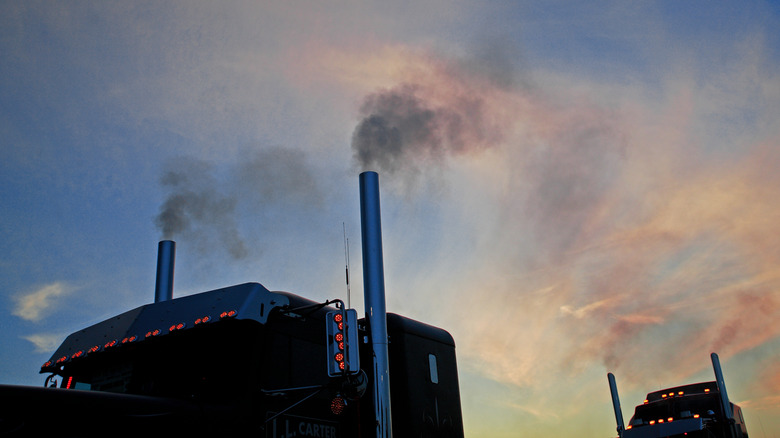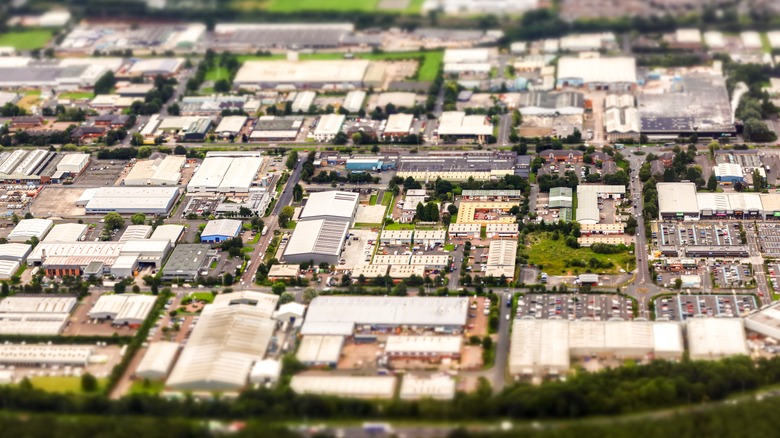What Is A Diesel Death Zone And Are You At Risk?
Diesel engines have been a long running staple in a number of vehicles (read: trucks) for a very long time. It's still the better engine choice over gasoline when it comes to hauling power, which is why it's still so prolific in shipping and distribution. Diesel engines also tend to last longer than regular gas engines, and are generally more efficient.
This proliferation of diesel vehicles for so long, coupled with an uptick in online purchases since the beginning of the COVID-19 pandemic necessitating more product shipments, has resulted in an increase of so-called "diesel death zones" across the U.S.
Despite the name, diesel death zones are not solely looking at deaths that may have been the result of diesel fumes — though it is still a factor. Rather, these are the areas of the U.S. that see massive amounts of diesel-fueled vehicle traffic. As in absurd amounts of trucks and the like passing through particular areas constantly. In short, these are places where a whole lot of diesel fumes are regularly expelled at an excessive rate.
What's the danger?
Most people know or can intuit that it's a bad idea to hang around an enclosed space filled with vehicle exhaust, regardless of whether it's coming from unleaded or diesel fuel. In the case of diesel in particular, the Occupational Safety and Health Administration (OSHA) acknowledges a number of associated health risks.
Animal testing has resulted in some of the subjects developing cancer from breathing in polyaromatic hydrocarbons (PAH) left behind by diesel exhaust. OSHA also notes that people who regularly work around diesel exhaust show an increased risk of developing eye irritation, headaches, nausea, and nose irritation. In more severe instances, some workers have also developed respiratory disease, or even lung cancer.
There are currently no standards being set by OSHA to address and regulate diesel emissions, but the agency has guidelines in place when it comes to worker exposure to those emissions. Diesel death zones, however, are a trickier matter when it comes to possible oversight and regulation as these locations aren't limited to just workplaces that experience a lot of diesel fumes.
Where are these death zones?
These kinds of zones are particularly common in distribution-heavy locations, as well as several major metropolitan areas. On a state level, the Clean Air Task Force considers California, New Jersey, and New York to be the biggest diesel health risks (particularly as it applies to developing cancer), but plenty of other states are risky in their own right when you get close to major distribution hubs and some cities.
On a smaller scale, though, it's these hubs that are the biggest concern. A single warehouse can see plenty of truck traffic on its own in a given week, but there are parts of the U.S. where the warehouses are unfathomably large — or several of them are clustered together, or both — and the trucks run constantly. Sometimes built within or around residential areas, increasing the diesel fume exposure to residents who may otherwise have nothing to do with these trucks or facilities.
If you suspect your neighborhood might be in or near one of these zones, or if you're planning to move and want to try and avoid these areas, there is a way to double-check. The Clean Air Task Force has provided a map tool that visualizes national statistics for diesel pollution and reported diesel-related health conditions.


